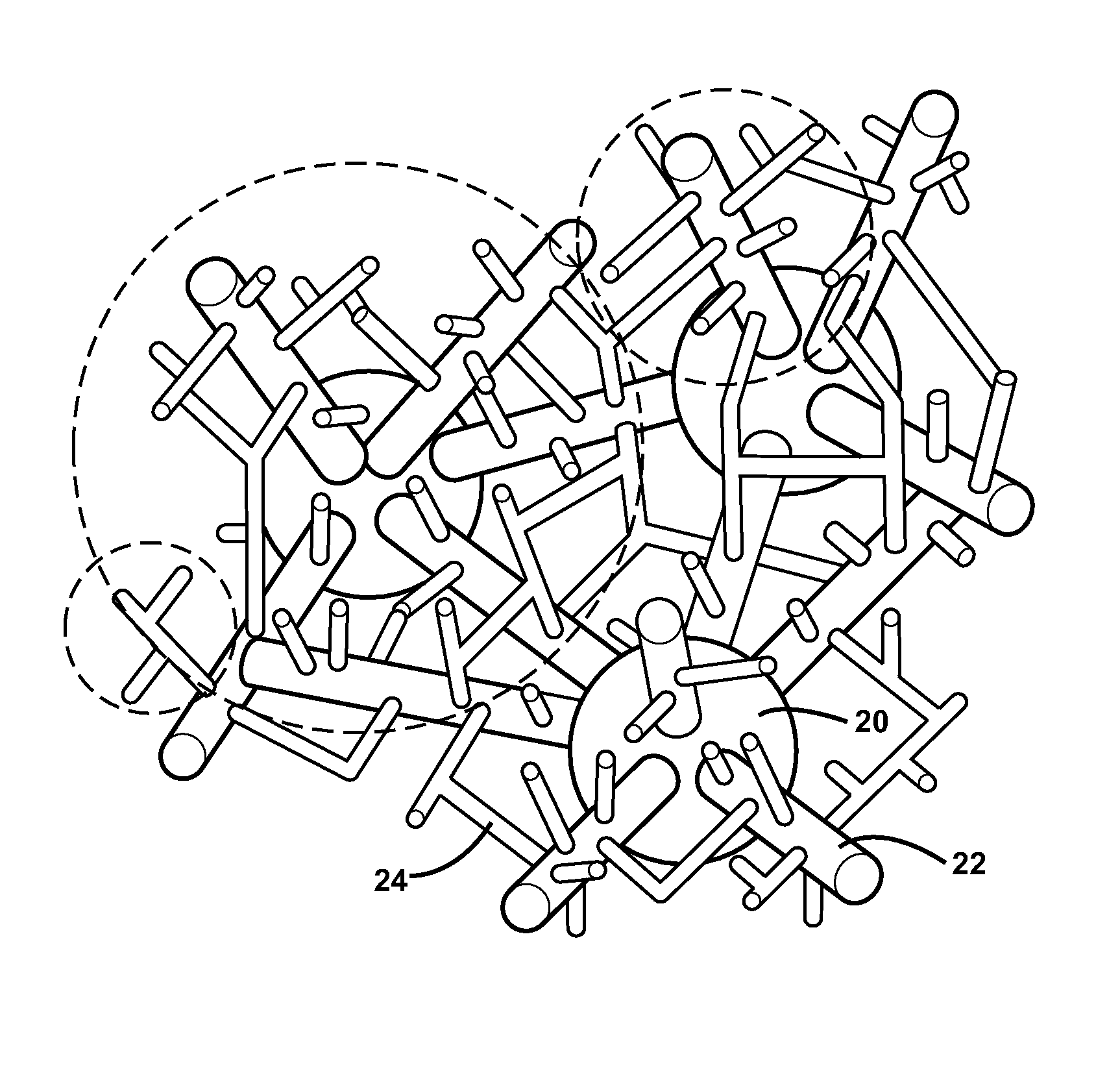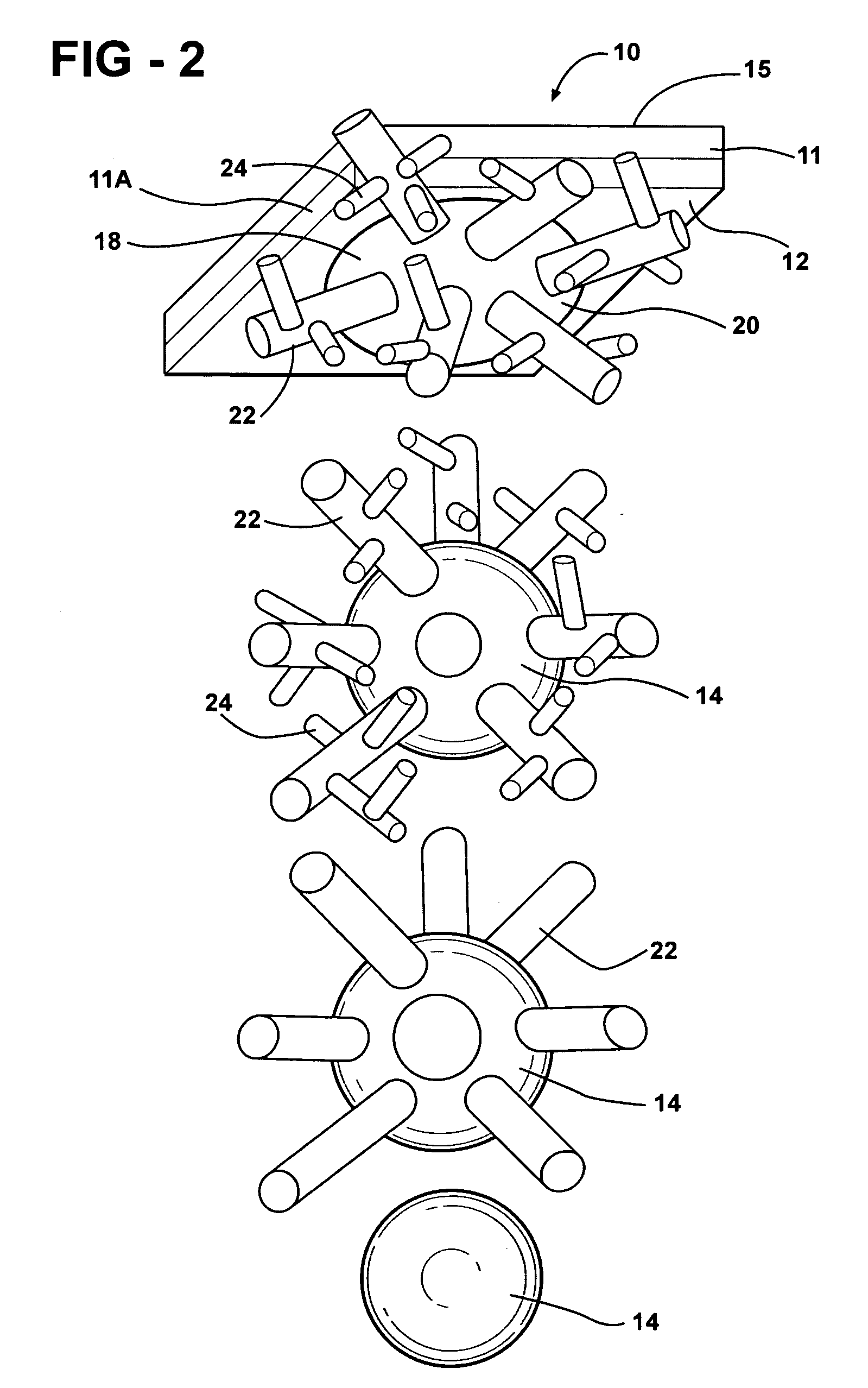Nanostructural Electrode and Method of Forming the Same
a nano-structural electrode and electrode technology, applied in the direction of cell components, electrochemical generators, coatings, etc., can solve the problems of affecting the use of high current of charge and discharge, destroying carbonic fragments, loss of electrical contact between, and failing to ensure the high speed of discharge and charge of batteries. , to achieve the effect of improving nano-structure, low cost and adhesion properties
- Summary
- Abstract
- Description
- Claims
- Application Information
AI Technical Summary
Benefits of technology
Problems solved by technology
Method used
Image
Examples
Embodiment Construction
[0045] Referring to the Figures, wherein like numerals indicate like or corresponding parts, an electrode of the present invention is generally shown at 10. The electrode 10 of the present invention is formed from a metal tape, i.e. foil, generally indicated at 11 and shown fragmentally in FIGS. 1 and 2, is used to form a first electrode such as an anode and a second electrode such as cathode (both not shown), spaced by a separator and combined into a cell (not shown) for producing electric power without limiting the scope of the present invention. The metal current collector or substrate 11 of the first electrode and the second electrode has opposed sides 12 and 14, as best illustrated in a cross sectional view shown in FIGS. 1 and 2.
[0046] The electrodes are combined into at least one cell used for a battery (not shown) for an automotive vehicle (not shown). The present inventive concept has various other applications including and not limited to high efficiency thin-film photovo...
PUM
 Login to View More
Login to View More Abstract
Description
Claims
Application Information
 Login to View More
Login to View More - R&D
- Intellectual Property
- Life Sciences
- Materials
- Tech Scout
- Unparalleled Data Quality
- Higher Quality Content
- 60% Fewer Hallucinations
Browse by: Latest US Patents, China's latest patents, Technical Efficacy Thesaurus, Application Domain, Technology Topic, Popular Technical Reports.
© 2025 PatSnap. All rights reserved.Legal|Privacy policy|Modern Slavery Act Transparency Statement|Sitemap|About US| Contact US: help@patsnap.com



